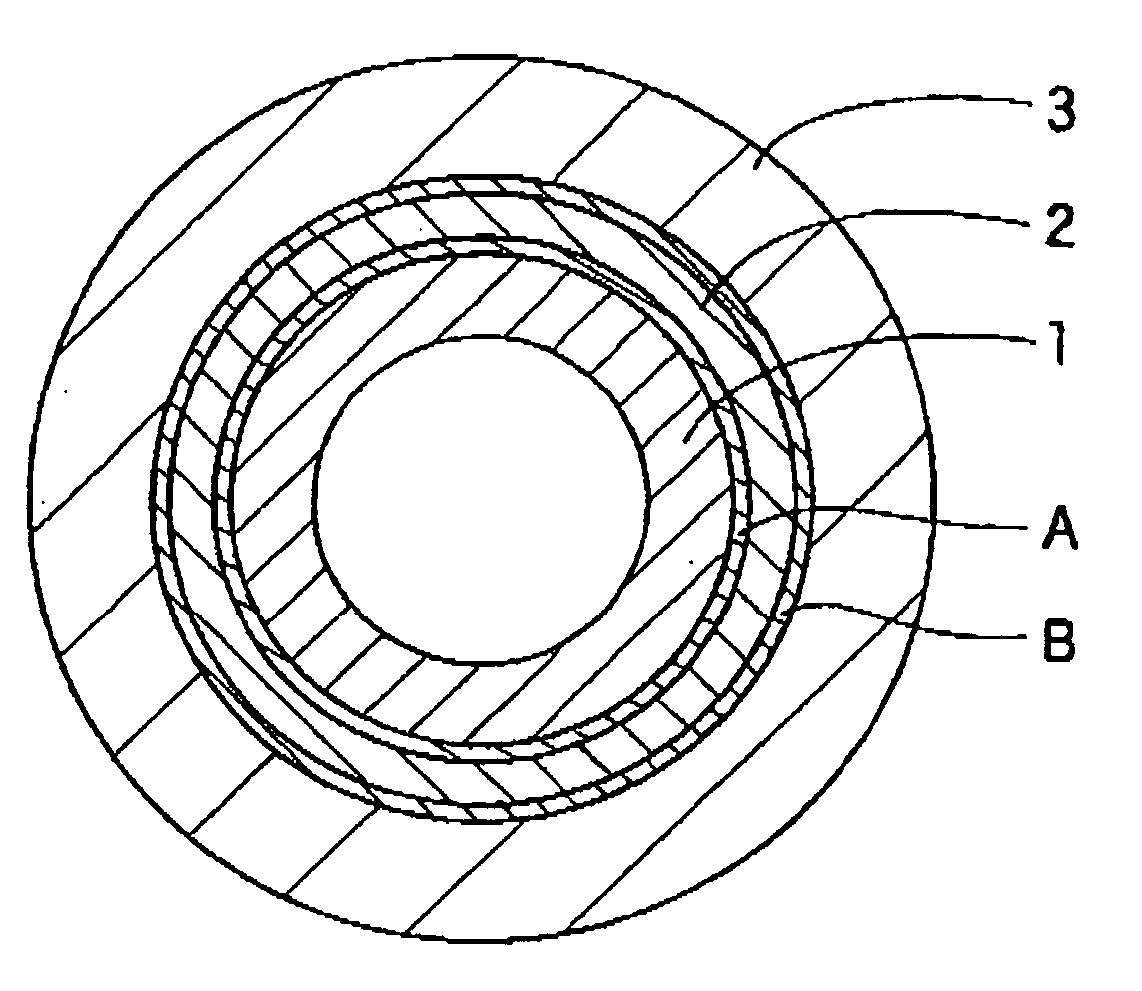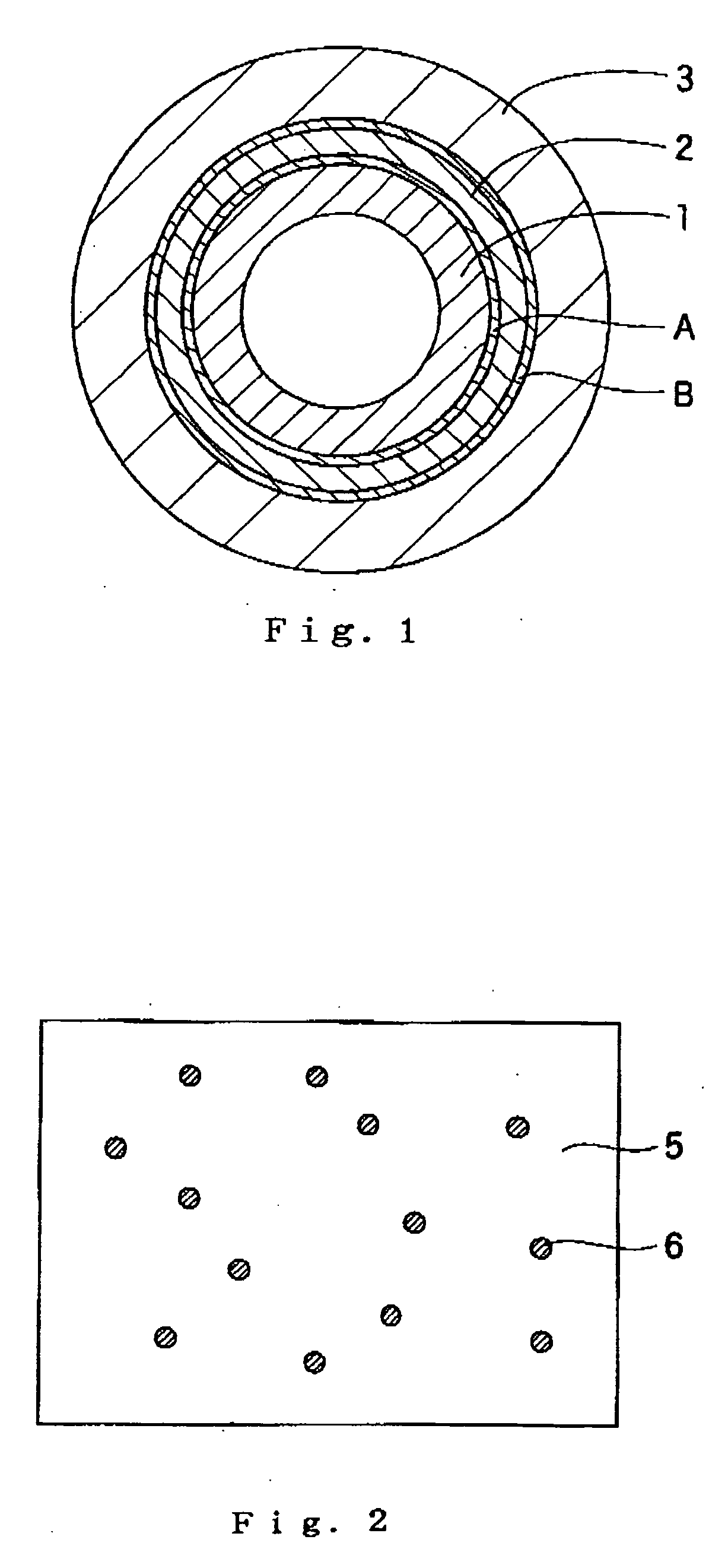Fuel cell hose
- Summary
- Abstract
- Description
- Claims
- Application Information
AI Technical Summary
Benefits of technology
Problems solved by technology
Method used
Image
Examples
example 1
[0061] The components of the material for an inner layer shown in Table 1 below were mixed at a ratio shown in the same table, and the resulting mixture was kneaded with a twin screw extruder at 200° C., whereby the material for the inner layer was prepared. The components of the material for a barrier layer shown in Table 1 below that have been dry-blended at a ratio shown in the same table were kneaded with a twin screw extruder while the barrel temperature and the die temperature were set to 100° C. and 230° C., respectively, to melt the resins mainly by the heat generated by shearing, whereby the material for the barrier layer was prepared. The components of the material for an outer layer shown in Table 1 below were mixed at a ratio shown in the same table, and then the resulting mixture was kneaded with a twin screw extruder at 200° C., whereby the material for the outer layer was prepared. As the material for an adhesive layer, maleic anhydride-modified PP (ADMER QF500, avail...
PUM
| Property | Measurement | Unit |
|---|---|---|
| Percent by volume | aaaaa | aaaaa |
| Percent by volume | aaaaa | aaaaa |
| Percent by volume | aaaaa | aaaaa |
Abstract
Description
Claims
Application Information
 Login to View More
Login to View More - R&D
- Intellectual Property
- Life Sciences
- Materials
- Tech Scout
- Unparalleled Data Quality
- Higher Quality Content
- 60% Fewer Hallucinations
Browse by: Latest US Patents, China's latest patents, Technical Efficacy Thesaurus, Application Domain, Technology Topic, Popular Technical Reports.
© 2025 PatSnap. All rights reserved.Legal|Privacy policy|Modern Slavery Act Transparency Statement|Sitemap|About US| Contact US: help@patsnap.com



